I had the pleasure to interview Alessandro Cioffi in 2010 for his work on NINJA ASSASSIN at Trixter. Since then he has worked on films like PERCY JACKSON, IRON MAN 2 or X-MEN FIRST CLASS.
How did Trixter got involved on this show?
Since the time of our collaboration with CAPTAIN AMERICA’s vfx Supervisor Christopher Townsend on NINJA ASSASSIN first, in the late 2008, and PERCY JACKSON afterward, we had the pleasure to strike up a nice friendship along the years and many times we’ve looked forward to working together again. Eventually, around the end of March 2011, beginning of April we received an informal telephone call from Chris, who was by that that time extremely busy finishing the visual effects on the show, in which he asked us if we felt up to embracing the challenge on a tricky sequence, the so called Flashback sequence, which presented some complexity for being somehow different from the rest of the show. And guess what? Two hours later we set up our first Cinesync session for an initial briefing.
How was the collaboration with director Joe Johnston and Production VFX supervisors Christopher Townsend and Stephane Ceretti?
It has been an excellent collaboration. Rewarding, effective and mostly easygoing, even in moment of hectic hard work. Though, throughout the entire production we mainly had contacts with Chris Townsend, from whom we received briefings and feedbacks and, as said, we had frequent Cinesync sessions with. We also received Editorial comments almost on a daily basis, as the Flashback sequence, i.e., is all based on a visually vehement concept made of frequent and multiple dissolves upon a variety of elements, creatively combined. And naturally we received director Joe Johnston’s comments as well every time one or more of our shots were screened for him, he always had good words of encouragement and recognition. Very supportive, i was glad to appreciate, and so the team did.
Funny wise, with Stephane I didn’t collaborate on CAPTAIN AMERICA directly, but as we started our work on it we were just wrapped on another international show, the X-MEN: FIRST CLASS, on which Stephane Cerretti was VFX Supervisor, therefore for over two months i had the opportunity to work with him anyway.
 |
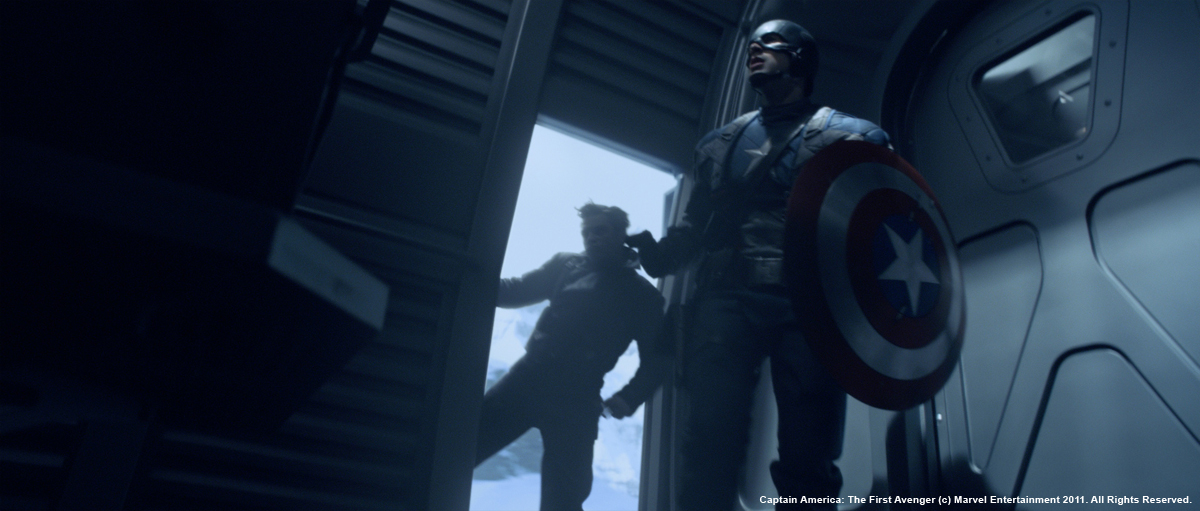 |
What sequences have you made on this show?
We worked on the above mentioned Flashback sequence, describing how Schmidt descends into madness and eventually becomes the Red Skull, and on the train sequence where Captain America tries to high-jack the train and where he fatally loses his friend ‘Bucky’ Barnes. Plus a handful of shots from other sequences. In total we worked on over 115 shots.
What references and indications did you received for the flashback sequence?
For the Flashback sequence we were provided with an editorial version of the sequence for timing reference and naturally plenty of scans. Many backgrounds were then recreated and enhanced by us in a creative way, as well as the picture compositions were rebalanced according to the story that every shot had to tell. As said, we were given the opportunity to be proactive in the look development of this sequence, and the process naturally involved many long talks and cinesync sessions with Chris, which we used with greater enthusiasm!
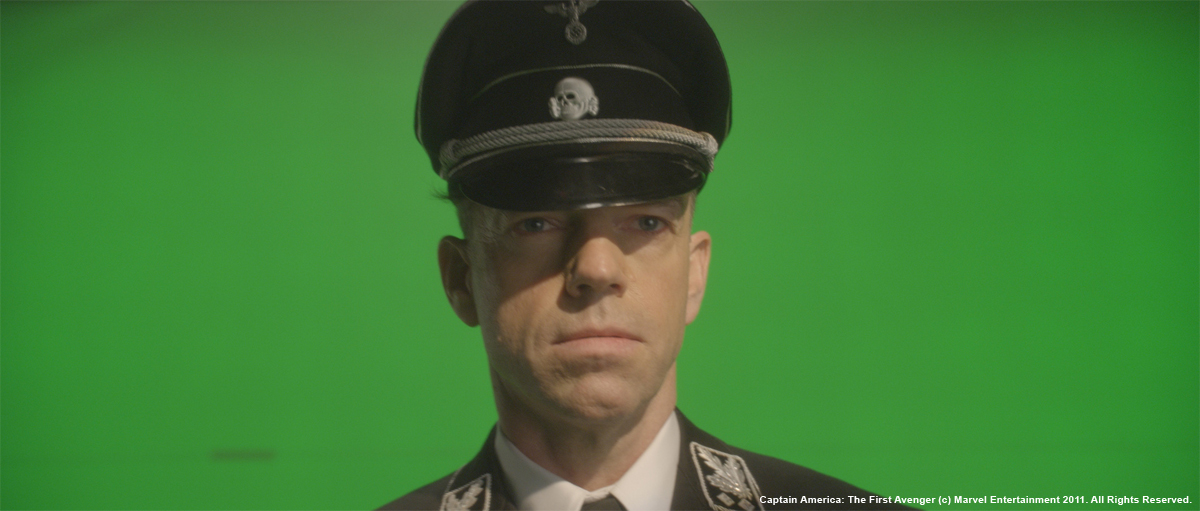 |
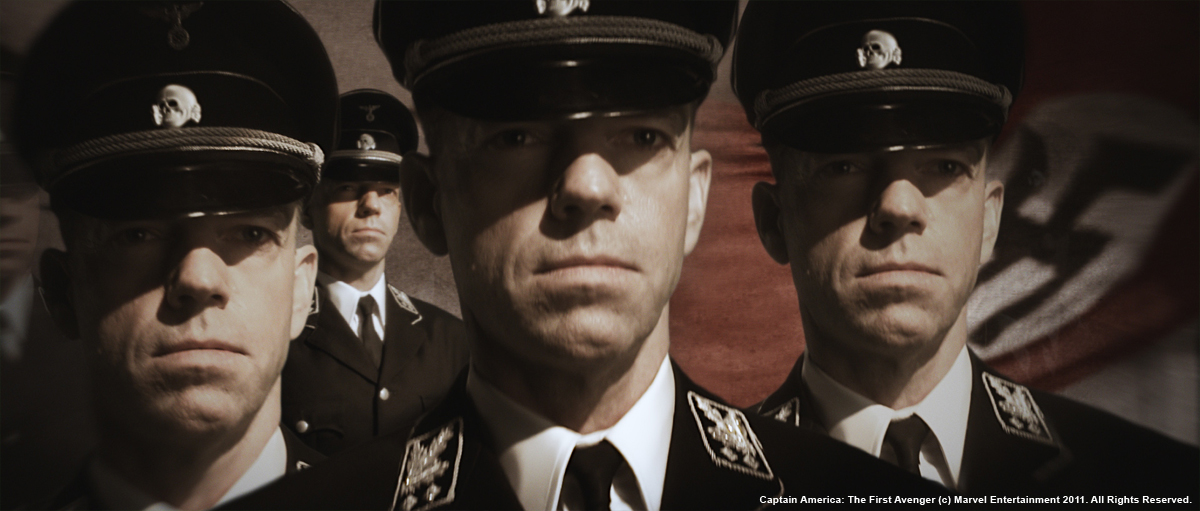 |
How did you create the shield?
As mentioned we came on board pretty late, so time was ragingly against us since the beginning. Production was fortunately very supportive so we were provided with a rough model and vast array of pictures of the shield at different stages of deterioration. From there it was fairly straightforward to re-texture it and shade it according to the sequence we were working on. For the animation, we tried to anticipate our client’s wishes and preferred to present two or three versions at a time, so that Joe and Chris could foresee eventual changes and possibly streamline the approval process. That was the same approach we had on the digital double of Bucky falling from the train. There a shot in particular, which is sort of pivotal in the storyline, a POV of the Captain America, where he sees his friend dieing in a crevasse. Joe wanted to extend the fall substantially so we switched from a live action element of the actor, shot on green screen, to a digital double of his. Here we tried to present more alternatives per session in order to speed up and facilitate their decisions.
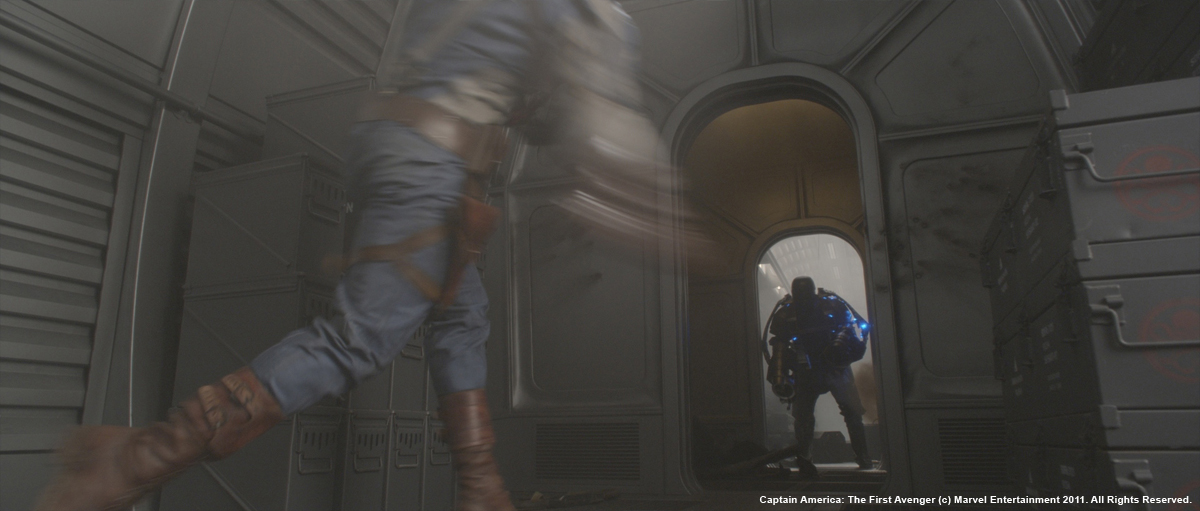 |
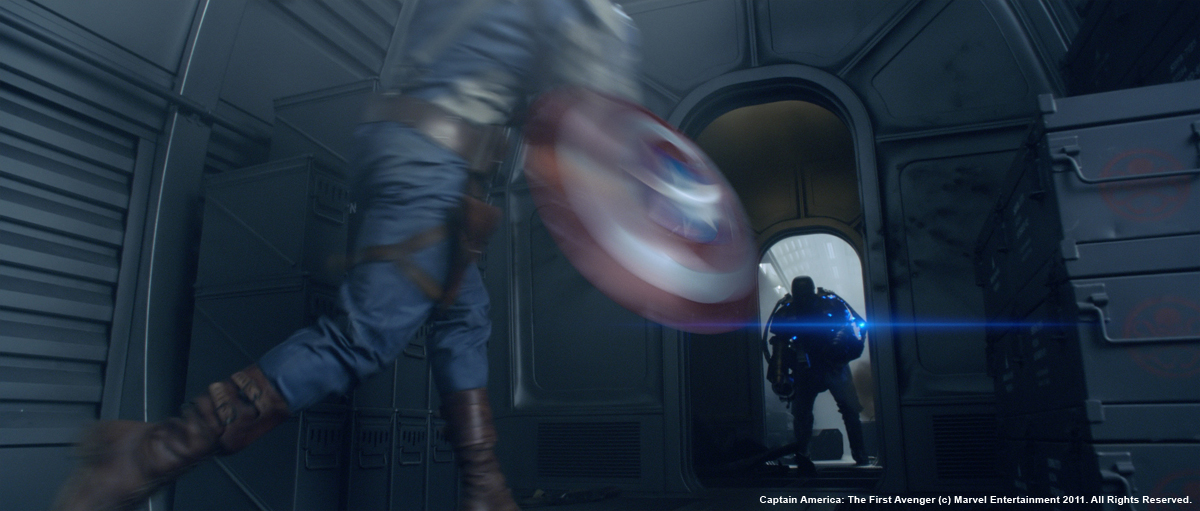 |
What references or materials did you received from production for the blue bolt fx and how did you create them?
This has been one of the main challenge, as we had to seamlessly “plug” into other vendors’ work on the same sequences, in this case Double Negative which meant that we had to duplicate some of their effects along with creating our own, but in the same style. Naturally we were provided with plenty of references, qt movies and still images, which was of greater help. After one of two weeks of playing around on Houdini, and long sessions with Chris Townsend, discussing every detail of the effects, we were ready to present our first shots with the bolts in it.
 |
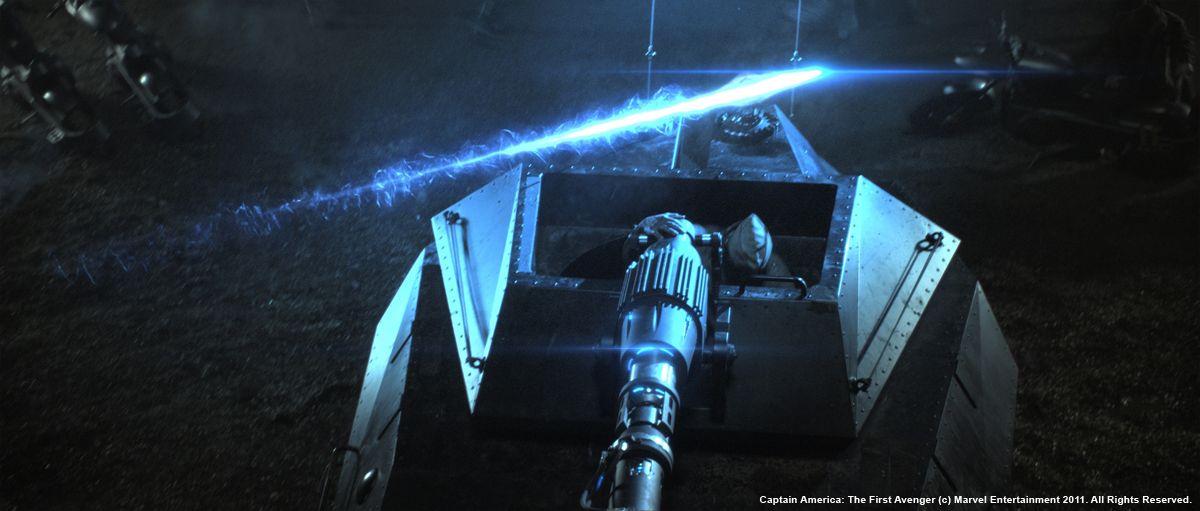 |
Did you share some assets with the other vendors?
Never directly, everything was coordinated and organized by the Production.
Can you tell us more about your greenscreen composites?
On the train sequence we mostly worked on interior shots. For those shots involving externals, like green screens or the Bucky sequence, BG plates where provided, we then enhanced the scene by adding atmospherics, clouds and so on, taken from our vast library of live action elements: It’s my firm belief that using the “real thing”, like actual snow or true wispy clouds, shot on black, has to be the primary way to go, using cg simulated elements only when absolutely necessary.
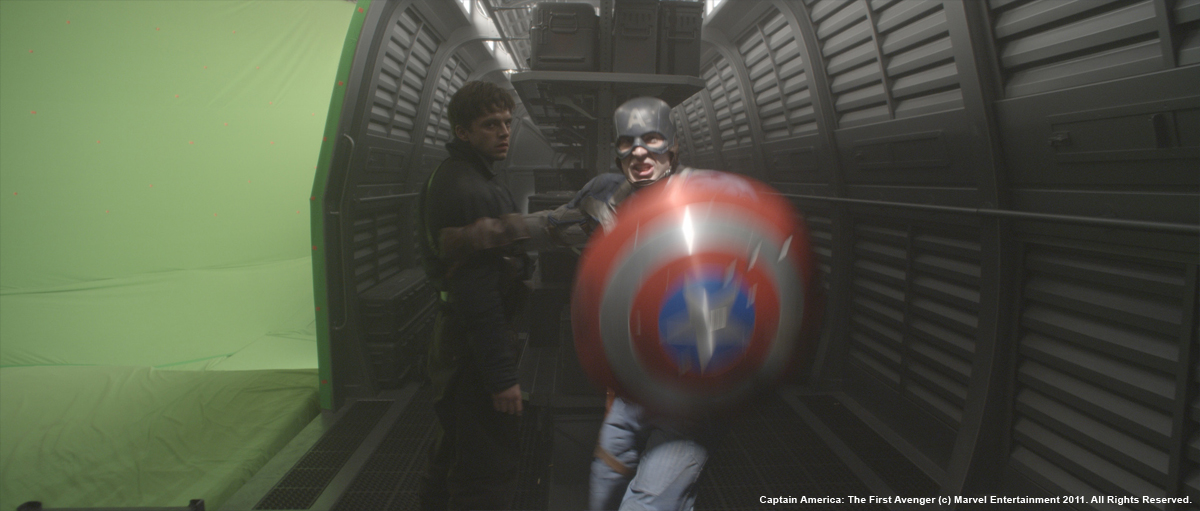 |
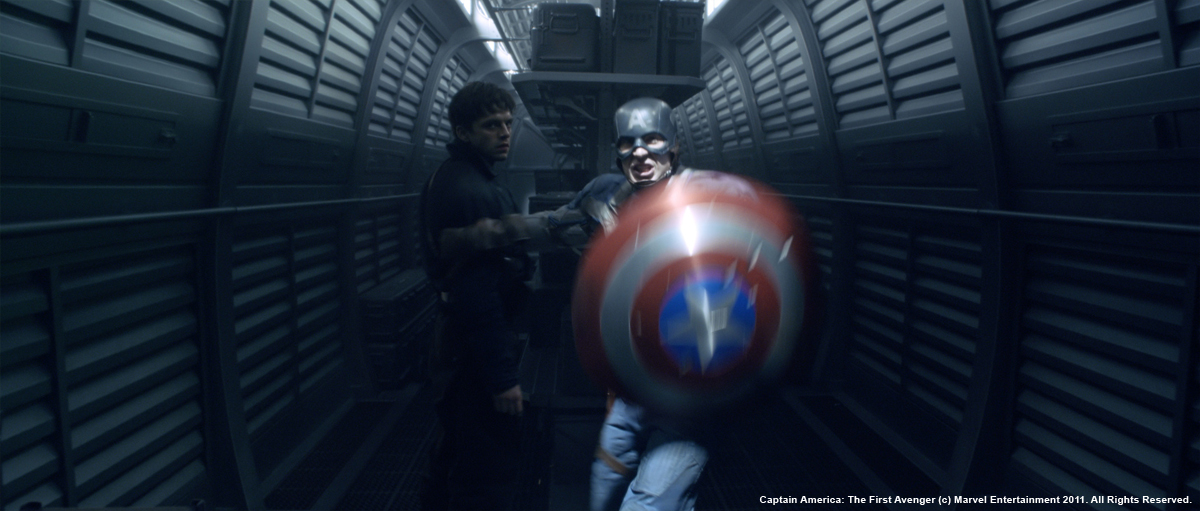 |
How did you managed the stereo conversion?
To be precise, we only converted the flashback sequence, as involving a third party, for that specific sequence, would have been too complex. The original idea was to give it a sort of disturbing, atmosphere. Chris asked us to come up with a few ideas for grading the sequence, and adding lensing artifacts in artistic but almost retro way. After a couple of layouts, we’ve gone for the look of the “three strip Technicolor Process”. In this sequence, where the cut is very dynamic and uses a number of alternating cross dissolve transitions, Townsend’s idea was of playing with the depth during the stereo conversion process to create a disorienting feeling for the audience.
Was there a shot or a sequence that prevented you from sleep?
More than a shot or a sequence in particular, was the whole scheduled that felt kind of scary! Anyway we managed to finish over 115 shots in little less than 6 weeks with a team of 20 people between artists and producers. We tried to optimize our resources and our time by keeping the production very tidy and asking and receiving constant feedback. We tried to stay well organized. And cool, most of all!
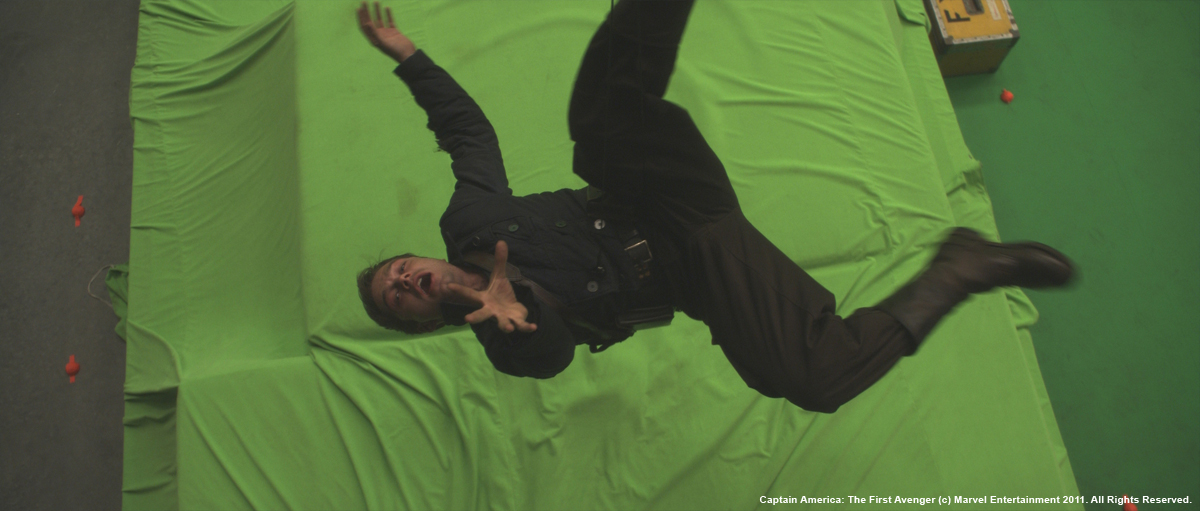 |
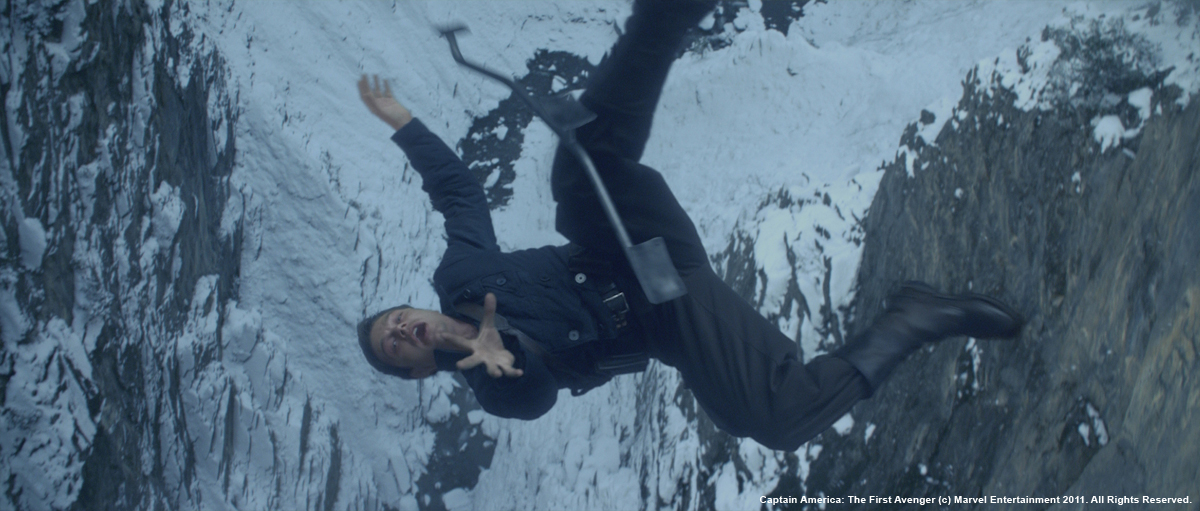 |
What do you keep from this experience?
Great excitment and loads of adrenaline!
What is your next project?
We’re currently doing CG creatures for JOURNEY 2 – MYSTERIOUS ISLAND, we provide FX work for James McTeigue’s RAVEN and we’ve just finished DEATH OF A SUPERHERO, a german-irish co-production which is going to be screened at next Toronto Film Festival, in September. There are more exciting projects in the pipeline, but I can’t disclosed details so far.
A big thanks for your time.
// WANT TO KNOW MORE?
– Trixter: Official website of Trixter.
© Vincent Frei – The Art of VFX – 2011






